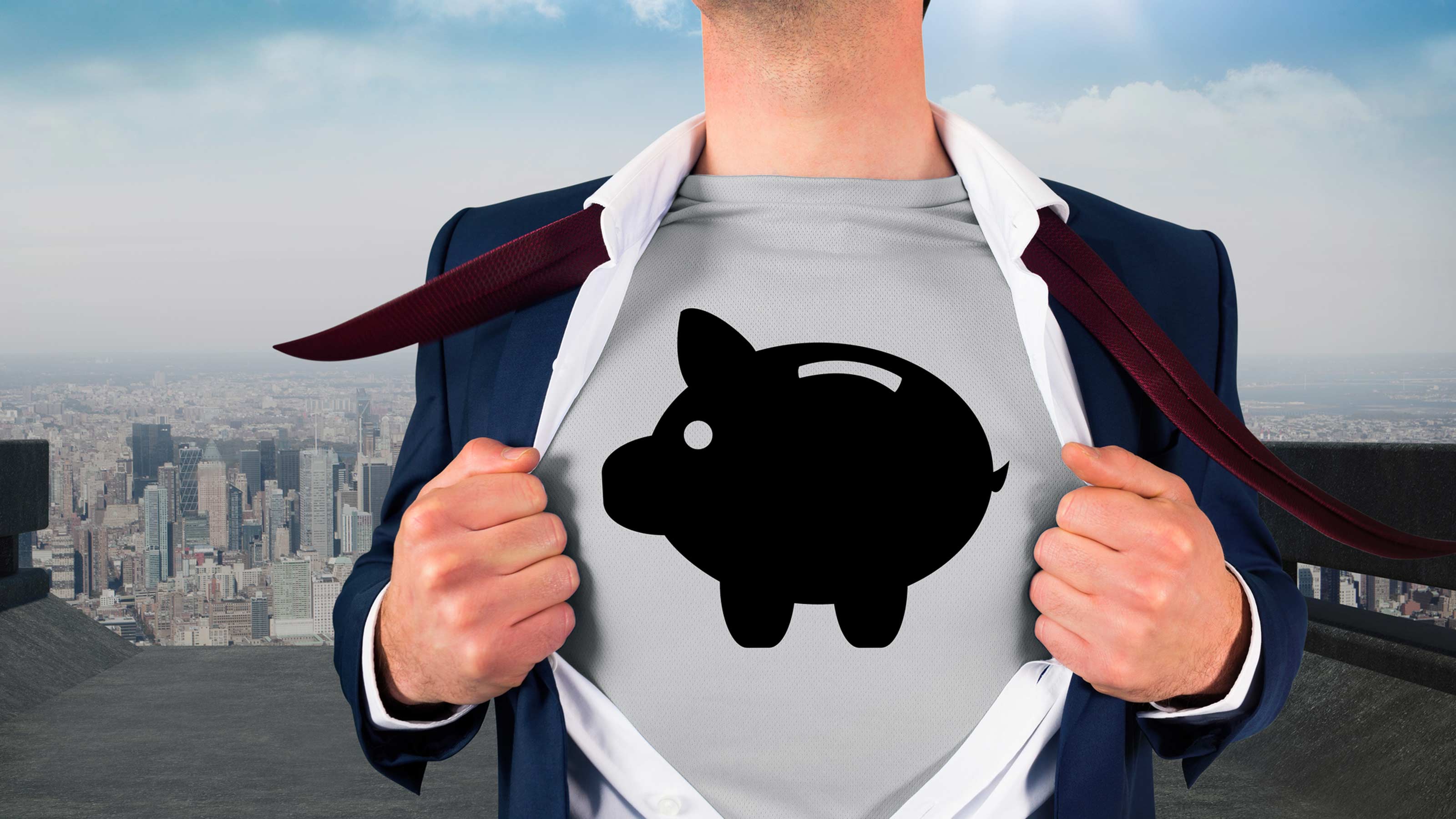COVID-19 Super Savers Need to Carefully Navigate in a Post-Pandemic World
The pandemic has turned many people into saving machines, which is great, but that comes with its own set of risks. These frugal folks need to be extra careful right about now because they could be especially vulnerable as we return to normalcy.


A little over a year ago, COVID-19 hit the United States, altering the fabric of our daily lives and turning the average American's personal finances upside down. Within weeks, 52% of all households slashed their spending. From all the upheaval and radical change emerged a new generation of risk-averse, financially conservative people: Meet the super savers.
After COVID reached the United States, we saw a pronounced jump nationwide in the personal savings rate — the amount of people’s disposable income that gets saved or invested. For the last two decades that savings rate sat at just under 10%. In April of 2020 it exploded to 33.7%, more than three times its usual number, according to Federal Reserve data.
Fast-forward to 2021. The pandemic continues to wreak havoc, and a staggering 61% of Americans say they are in danger of running out of their emergency savings. Super savers are on the opposite end of that spectrum. They are middle-class families who've embraced an aggressive level of precautionary saving, or they are people with high incomes who've seen their disposable expenses, like entertainment and travel, drop off drastically.

Sign up for Kiplinger’s Free E-Newsletters
Profit and prosper with the best of expert advice on investing, taxes, retirement, personal finance and more - straight to your e-mail.
Profit and prosper with the best of expert advice - straight to your e-mail.
There may be a light at the end of the tunnel for COVID-19: The current administration expects 300 million vaccines to be administered by the end of July. Things may be on their way back to normal, but where does that leave the super savers who've embraced extreme and unsustainable frugality? They had the luxury of an altered pandemic budget working in their favor, but when a sense of normalcy returns to our daily lives later this year, how will they cope?
Super savers will be faced with the opportunity to spend their new nest egg and may feel like they deserve to make up for lost time. When quarantines finally come to an end there will be infinite temptation. If super savers aren't careful, the pendulum could swing the other way, paving the way for bad spending habits to emerge. They will need to sensibly allocate their funds ahead of time instead of falling into the trap of overindulgence.
Here are some practical tips to keep in mind as they move forward into a return to normalcy:
Don't Stop Investing
We've experienced a high degree of societal turbulence over the last few months, which has bled into the long-term investment practices of so many Americans. Households guided by extreme frugality may have decreased their 401(k) contributions to have more liquid cash on hand. That's a corner you can't afford to cut. In the post-pandemic world, super savers must continue their long-term investment strategies.
Despite a historic level of stock market volatility during the past few months, super savers should not let their hallmark level of risk adversity affect their willingness to invest. This year has been filled with incredible investment opportunities for those willing to embrace even a little risk. But for those geared toward frugality, the age-old advice holds true: Stay the course. Maintaining a solid investment portfolio is worth more than hanging onto your cash, and super savers are in an opportune position to ride out market instability.
Keep Your Debt Under Control
Too much extra cash on hand and nowhere to spend it? That's the challenge facing super savers when COVID-19 subsides. It'll be tempting for even the most frugal person to go on a spending spree; that's human nature. Whether it's a major home improvement, a new car or extra spending on entertainment, super savers will be hard-pressed to guard the nest egg they've built.
With interest rates at all-time lows, now is the time to make those rates work for you. Look for ways to curb your existing debt —by refinancing your mortgage or seeking lower APR on your credit cards — instead of accruing new debt.
Curb Extraneous Monthly Expenses
COVID-19 transformed our homes from a simple living space into a hub for work, school and entertainment. Over the course of the pandemic, it's been too easy to justify paying for dozens of streaming services, such as Netflix, Amazon Prime or HBO Max.
As the world opens back up, it's time to analyze the services you pay for and cut back where you can. As things like travel and entertainment expenses come back online, little recurring charges can add up without providing the same level of value that they previously did.
Keep Your Budget Flexible and Plan for the Near Future
COVID-19 has made many households fiscally conservative by accident. Families with stable income and a lack of goods and services to spend it on might seem responsible on the surface, but quick and radical changes to personal finances can breed bad spending habits down the road.
A more realistic budget is one that is flexible and geared toward the near future. When things return to normal, as they inevitably will, super saving patterns will no longer be feasible. To continue enjoying good financial health, avoid large impulsive purchases that further saddle your household with debt, and think about real world costs, such as child care, gas and food. Plan for the concrete and build in money for emergencies, but don't hoard for a doomsday scenario. By adopting a solid and sensible budget now, super savers can avoid financial pitfalls when we all come back down to earth.
Disclaimer
Securities and investment advisory services offered through Royal Alliance Associates Inc., (RAA), member FINRA / SIPC. RAA is separately owned, and other entities and/or marking names, products or services referenced here are independent of RAA.
Get Kiplinger Today newsletter — free
Profit and prosper with the best of Kiplinger's advice on investing, taxes, retirement, personal finance and much more. Delivered daily. Enter your email in the box and click Sign Me Up.

For more than 18 years, Adam Lampe has helped high net-worth-individuals, affluent families, foundations and institutions work toward their financial goals through holistic financial planning. As the CEO & Co-Founder of Mint Wealth Management, he leads all development efforts within the firm. Alongside his extensive work serving clients, Adam also teaches retirement planning courses through Lone Star College and Prairie View A&M University satellite campuses around Houston.
-
 Stock Market Today: Stocks Struggle Amid Tariff Uncertainty
Stock Market Today: Stocks Struggle Amid Tariff UncertaintyBoeing dropped after China suspended new aircraft orders, while Bank of America and Citi climbed on earnings beats.
By Karee Venema
-
 Starbucks 2025 Dress Code Changes: See the New Look
Starbucks 2025 Dress Code Changes: See the New LookThe 2025 Starbucks dress code change features a uniformed look as part of creating a more familiar and friendly cafe experience.
By Sean Jackson
-
 Should You Hire a Public Adjuster for Your Insurance Claim?
Should You Hire a Public Adjuster for Your Insurance Claim?As natural disasters strike more often, insurance clients are asking, 'What should I do, or who should I hire, if my insurance company is jerking me around?'
By H. Dennis Beaver, Esq.
-
 Tips to Help Entrepreneurs Create Self-Sustaining Businesses
Tips to Help Entrepreneurs Create Self-Sustaining BusinessesWith the right processes and people in place, a truly sustainable business can be efficiently passed on to a successor and run profitably on its own.
By Jason L Smith, CEP®, BPC
-
 Navigating Annuity Taxation: A Guide for Financial Advisers
Navigating Annuity Taxation: A Guide for Financial AdvisersUnderstanding the essentials of taxation in retirement income strategies involving annuities helps ensure positive outcomes for clients.
By Jake Klima
-
 How Google Reviews Can Help (or Hurt) Financial Advisers
How Google Reviews Can Help (or Hurt) Financial AdvisersDon't leave your Google Business Profile unclaimed — someone else can make changes if they claim it. Also, here's what you can (and cannot) do with the reviews.
By Jeff Briskin
-
 How Baby Boomers and Gen Xers Are Redefining Retirement Living
How Baby Boomers and Gen Xers Are Redefining Retirement LivingBoth generations need to embrace change and leverage real estate as a dynamic asset in their retirement planning. Here's how financial advisers can help, too.
By David Conti, CPRC
-
 How Good Advisers Manage Risk in Challenging Markets
How Good Advisers Manage Risk in Challenging MarketsThey understand the difference between what might be real challenges to an investor's strategy and fear brought on by market volatility.
By Ryan L. Kirk, CFA®
-
 Financial Planning's Paradox: Balancing Riches and True Wealth
Financial Planning's Paradox: Balancing Riches and True WealthWhile enough money is important for financial security, it does not guarantee fulfillment. How can retirees and financial advisers keep their eye on the ball?
By Richard P. Himmer, PhD
-
 A Confident Retirement Starts With These Four Strategies
A Confident Retirement Starts With These Four StrategiesWork your way around income gaps, tax gaffes and Social Security insecurity with some thoughtful planning and analysis.
By Nick Bare, CFP®